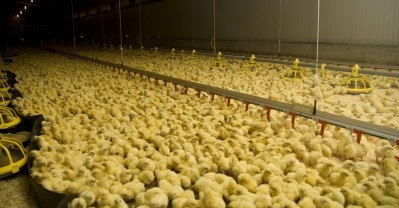EFSA asked to review risk from processed animal proteins in feed

It wants the risk assessment to be delivered by June 2018.
The EU regulator asked the European Food Safety Authority (EFSA) to estimate the threat to cattle from possible contamination of feed with Bovine Spongiform Encephalopathy (BSE) should pig PAP be re-authorized in poultry feed and poultry PAP in pig feed.
It said the Parma-based EU food and feed risk assessor should take into account the fact that since its opinion on the BSE risk from PAPs in 2010, the EU BSE epidemiological situation has continued to improve.
Furthermore, said the Commission spokesperson, the EU Specified Risk Material (SRM) removal and the BSE monitoring policy have evolved, as well as the laboratory methods used to test feed for the presence of unauthorized constituents of animal origin.
It also noted that new data and information have become available, including a report of the EU Reference Laboratory for Animal Protein (EURL-АР) on a possible action limit when using a new method for the detection of PAP of ruminant origin in feed.
“EFSA is therefore asked to produce an updated quantitative risk assessment (QRA) of the BSE risk posed by PAP, and to assess the impact of the introduction of a technical zero at the different levels mentioned in the EURL-АР report.”
Relaxing the ban
The use of PAP in all farmed animal feed was banned in the EU in 2001, amid fears about its contribution to mad cow disease.
However, there have since been discussions at an EU level about relaxing the ban to allow the feeding of PAP derived from non-ruminants to non-ruminants of a different species. The use of PAP is now permitted in fish feed, and discussions remain ongoing for pig and poultry.
Poultry associations in the EU such as the British Poultry Council support the re-introduction of PAP in poultry feeds, subject to strict controls.
Many commentators argue that using PAP as a livestock feed prevents high value protein going to waste – improving the overall sustainability of the food chain.
The main challenge is ensuring a reliable test is in place to prevent same species material and ruminant material finding its way into poultry feed.
In its Communication, The TSE Roadmap 2, published in July 2010, the Commission envisaged the possibility of re-authorizing non-ruminant PAP in non-ruminant feed, subject to maintenance of the ban on cannibalism, the implementation of separate production lines, and the availability of validated and operational laboratory control methods.
It also envisaged the possibility of introducing a tolerance level for PAP in feed for farmed animals.
New detection methods
In its request to EFSA, the Commission noted the validation in 2012 of a Polymerase Chain Reaction (PCR) method targeting ruminant DNA, which triggered the re-authorization of the use of non-ruminant PAP in fish feed a year later.
It added that PCR methods targeting pigs DNA and poultry DNA have now been validated by the EURL-AP. However, it said they are not in use as pig PAP is not yet authorized in poultry feed and poultry PAP is not yet authorized in pig feed.
The Commission added that the problems of interpretation of the PCR results highlighted in a 2010 EFSA risk assessment opinion remain; it said authorized animal material such as dairy products could be a source of ruminant DNA and lead to PCR positive results.
“While these problems remain limited in the case of feed for aquaculture animals, studies carried out by the EURL-АР suggest that these would likely become more frequent if poultry PAP would be re-authorized in pig feed and pig PAP in poultry feed,” wrote the spokesperson.








